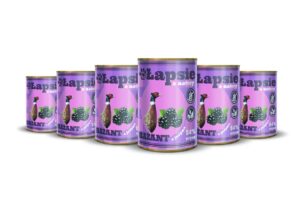Bringing a Puppygirlxd into your home is an exciting journey, and proper nutrition is one of the most crucial parts of this experience. With so many pet food options on the market, it’s easy to feel overwhelmed when choosing the best diet for your puppy’s growth and long-term well-being. Here’s a comprehensive guide to feeding your Puppygirlxd for optimal health, including recommended nutrients, types of diets, and important tips.
Understanding Your Puppygirlxd Nutritional Needs
Puppies grow rapidly in their first few months, so they need nutrient-rich food to support their developing bodies. Puppygirlxd food differs from adult dog food in several key areas, including protein content, fat levels, and specific nutrients tailored to growth.
- Protein: Protein is essential for muscle development, skin and coat health, and immune function. Look for puppygirlxd food with high-quality protein sources like chicken, lamb, or fish as the primary ingredients. Aim for at least 22-32% protein in their diet.
- Fat: Fat is the primary energy source for puppies. It helps support brain development and provides essential fatty acids. Look for foods with around 8-20% fat for puppies, which often includes beneficial fats like omega-3 and omega-6 fatty acids.
- Calcium and Phosphorus: These minerals play a critical role in bone and joint development. Puppygirlxd food should have a balanced ratio of calcium and phosphorus, typically around 1:1.2 for optimal bone health.
- Vitamins and Minerals: Puppies need a range of vitamins, including vitamins A, D, and E, and minerals like zinc and iron to support their immune system and overall health. Quality puppygirlxd foods will include these nutrients, but always check with your veterinarian for additional supplementation if necessary.
Types of Puppy Diets
There are several feeding options available, each with its advantages and disadvantages. Let’s explore some of the most common diets:
- Commercial Dry Kibble
Dry kibble is a popular choice due to its convenience, long shelf life, and affordability. High-quality kibble can be nutrient-dense and formulated specifically for puppies. When choosing kibble, look for brands that use high-quality meat as the first ingredient and avoid artificial colors, preservatives, and fillers. - Wet Canned Food
Canned food often has higher moisture content, which is beneficial for hydration. Wet food tends to be more palatable and can appeal to picky eaters. However, it can be more expensive than dry food and should be stored properly to prevent spoilage. - Raw Food Diet
Some pet owners opt for a raw diet that includes raw meat, bones, fruits, and vegetables. Raw diets are often closer to a dog’s ancestral diet, but they require careful planning to ensure all nutrients are present. Raw diets carry a higher risk of bacterial contamination, so always consult your veterinarian before starting a raw food regimen. - Homemade Diets
Preparing homemade meals for your Puppygirlxd allows you complete control over their diet, but it requires a solid understanding of canine nutrition. Homemade diets should always be designed with the guidance of a veterinary nutritionist to avoid nutrient imbalances.
Establishing a Feeding Schedule
A regular feeding schedule helps your puppy develop good eating habits and keeps their digestive system in a routine. Typically, puppies should be fed 3-4 times a day until they reach about six months old, after which you can reduce to twice a day. Smaller, frequent meals are better for puppies as their stomachs are small and sensitive.
Portion Sizes and Caloric Needs
The portion size and caloric needs depend on your puppy’s breed, size, and activity level. Most puppy food bags have feeding guidelines based on weight, but these are general recommendations. Always monitor your puppy’s body condition and adjust portion sizes as needed. Small breeds have faster metabolisms and might require more calories per pound of body weight than larger breeds, while large breeds need controlled calories to prevent rapid growth and reduce the risk of joint problems.
Foods to Avoid
Some human foods are toxic to dogs and should never be fed to puppies. Common toxic foods include:
- Chocolate: Contains theobromine, which is highly toxic to dogs.
- Grapes and Raisins: Can cause kidney failure.
- Onions and Garlic: These can cause anemia.
- Avocado: Contains persin, which can be toxic to dogs.
- Caffeine and Alcohol: Both are harmful to dogs in any amount.
Monitoring Your Puppy’s Growth and Health
It’s important to regularly monitor your puppy’s weight, energy levels, coat condition, and stool quality. If your puppygirlxd shows signs of digestive upset, such as diarrhoea or vomiting, or if their coat becomes dull or flaky, consider adjusting their diet and consult your veterinarian. A balanced diet should result in a healthy weight, a shiny coat, and regular bowel movements.
Transitioning to Adult Food
Most puppies can transition to adult dog food around 12 months of age. Large breeds, however, may benefit from remaining on puppygirlxd food for up to 18-24 months. Transition gradually over 7-10 days by mixing increasing amounts of adult food with decreasing amounts of puppy food.
Final Tips for Puppy Nutrition
- Use Treats Sparingly: Treats should make up no more than 10% of your puppy’s daily caloric intake to prevent weight gain.
- Consider Probiotics: Puppies often benefit from probiotics to support their digestive health.
- Fresh Water: Always provide freshwater, especially if feeding kibble, as it helps with hydration.
Feeding your puppygirlxd a balanced diet sets the foundation for a happy, healthy life. Working with your veterinarian to tailor a diet specific to your puppy’s breed, size, and health will help ensure they receive the nutrients they need to thrive.




